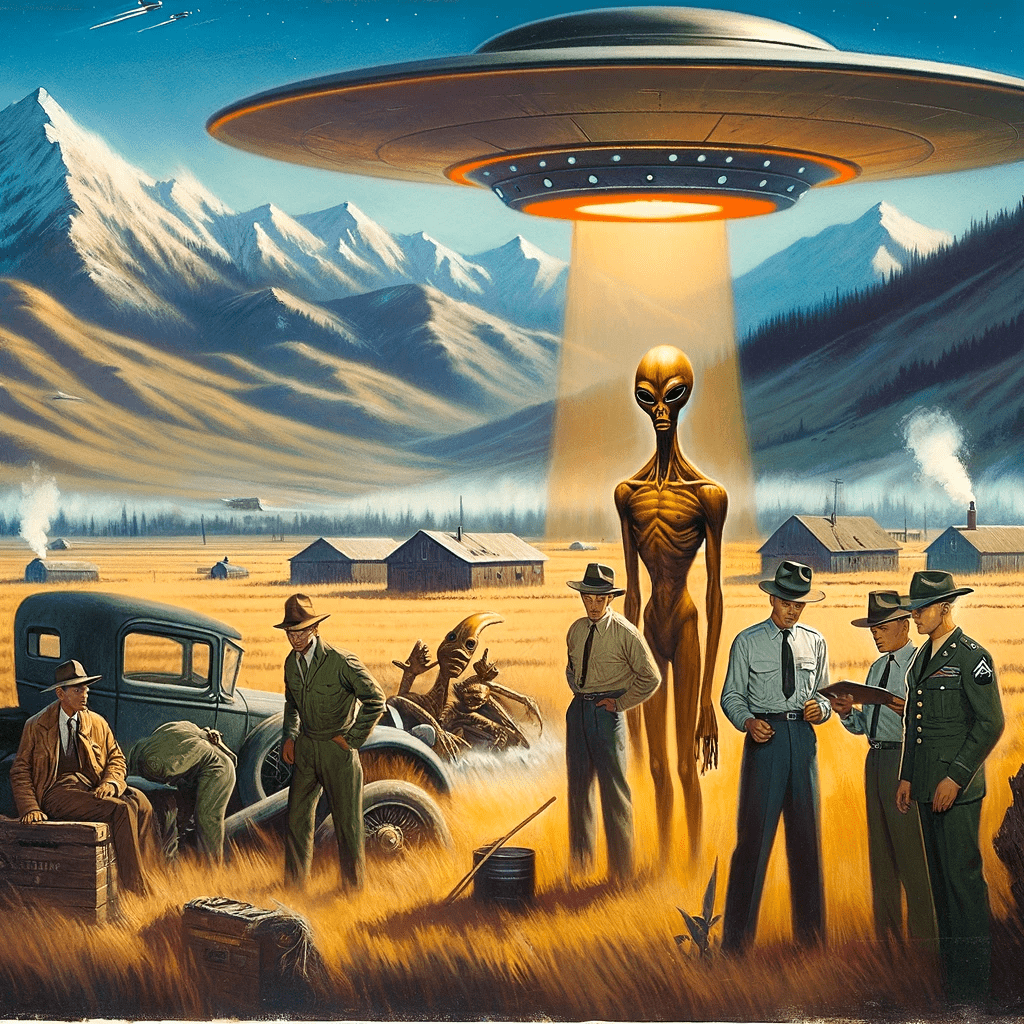Dutton Montana UFO Crash (1953)

The 1953 UFO incident near Dutton, Montana, a lesser-known event, occurred on October 13, 1953, in a rural area near Dutton. Cecil M. Tenny, a vacationer, initially saw smoke from a mountain but assumed it was a forest fire and didn’t investigate. The following day, while driving between Dutton and Brady, Tenny observed a cigar-shaped UFO flying about 200 feet above ground for approximately 7 minutes. This UFO, described as both cigar-shaped and disk-shaped, measuring 40-50 feet in diameter with a dome, seemed to be searching for something in the area. Tenny later realized it was searching for another crashed UFO, which was disk-shaped with one side damaged from an apparent explosion.
The distance between Dutton and Brady in Montana is approximately 16.25 kilometers (about 10.10 miles).
Tenny reported this incident to the Montana state police and shared his experience at a local bar. He was then contacted by Malmstrom AFB and taken to an isolated building on the base for interrogation. During his visit, he saw two large laundry bags containing humanoid bodies, described as about 7 feet tall with long blond hair, elongated Asiatic eyes, small noses and mouths, thin lips, pale skin, high and broad foreheads, and human-like but slender hands. These bodies, despite having severe injuries, had their heads protected by helmets and were identified as “Nordic” type aliens.
The bodies and wreckage were initially moved to Malmstrom AFB and later sent to Chicago University for preliminary study. They were reportedly later seen at Wright Patterson AFB. The entire incident is shrouded in secrecy, leading to speculations of extraterrestrial visitation and government cover-up.
Edward Teller worked at the University of Chicago in 1953. He returned to the University of Chicago as a professor on February 1, 1946, after leaving his position at Los Alamos National Laboratory. At Chicago, he was a close associate of Enrico Fermi and Maria Goeppert-Mayer, both notable physicists. During this period, Teller was deeply involved in theoretical physics, particularly in areas related to nuclear energy and fusion. His work at the University of Chicago is part of his broader contribution to the field of physics, especially his role in the development of the hydrogen bomb.


